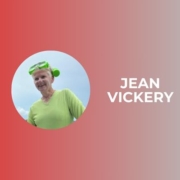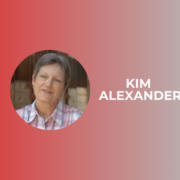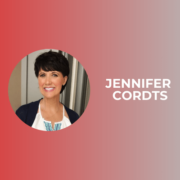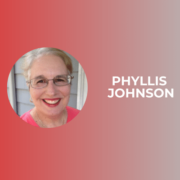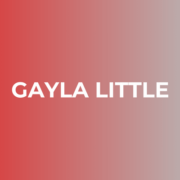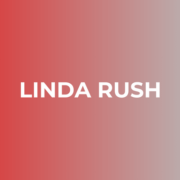19-1/2 Years and Counting by CLB [author prefers to use initials] (October 2020)
I am a stage 4 Inflammatory Breast Cancer survivor, diagnosed in May 2001. In February 2001 when I was 51, I noticed itching on my left nipple that stopped after a few days, and some discomfort in March and April during my monthly cycle. I specifically remember that on April 13th, there were no visible symptoms, but two weeks later, my breast was swollen, pink and warm with fever, a portion of the tissue across the top was hard, and I had shooting pain every so often. When my symptoms were at their worst the week of April 22nd, I was out of town on business. They seemed to appear overnight! I saw the doctor on May 4th and he said that the breast tissue was “1,000 times worse than in December” and he gave me Zithromax to take for 5 days. He hoped that I had an infection, but there was a mass about 8.8 cm that was very strange and hard. I returned on Tuesday, May 8th, and the doctor was very disappointed that the antibiotics had not helped. He explained that I should get an ultrasound that day. I had a very painful mammogram and then an ultrasound.
The radiologist was noncommittal – said he could not tell me what it was or wasn’t, and told me to immediately go back to my GYN. When I did, he was so upset and said the radiologist thought I might have a malignancy, and I should see my PCP right away. I really had to think what “malignancy” meant, and imagine my shock, when that had never crossed my mind at all! I left his office to go to see my PCP, whose nurse immediately called the surgeon, and he saw me on two days later on Thursday, May 10th. Again, I was shocked when he said I had a 50/50 chance of having breast cancer! I had pain – you are not supposed to have pain with breast cancer, right? The next day, my husband went to the Internet and did a search with the symptoms, and found an “inflammatory breast cancer” website. When I returned from work that day, he talked to me about it and asked me if I wanted to see what he had found, that it wasn’t good news. I told him, “If you know the enemy, you can fight it better,” and I needed to know what we were up against.
We got the bad news on Monday, May 14, 2001. When I met my oncologist, I asked him, “Do you believe in miracles?” He said, “I know there are things that happen that are unexplained.” I told him very firmly, that I did believe in them and he was going to see one happen. On Wednesday afternoon, a dear friend brought two of her powerful Christian friends to my office for healing prayer. Following the healing prayer, after crying, then laughing, I left the room with a big smile, saying, “I am going to be just fine!!” That was the beginning of my very positive attitude and intense faith that I knew I was right – and here I am!!! (My Bible Study teacher tells me I have the gift of Faith, and I used it on myself.)
I had the CT, echocardiogram, and bone scans on Tuesday and Wednesday. I started the Adriamycin/Cytoxan chemo on Thursday, May 17th and went back to work on Monday May 21st. Since a “gray” area showed up on my spine during the bone scan, an MRI three weeks later revealed two metastases in my vertebrae. My husband and I were devastated and again said many prayers that these would go away. Later in August, we found out there were actually six bone metastases.
One week after my first chemo on May 24th, my husband and I met with a breast cancer oncologist at Duke University Medical Center. He was very realistic and not encouraging, and explained that this was a serious breast cancer. We got the impression from him that I was not going to be around to worry about whether I had one or two breasts, and he did not recommend a bilateral mastectomy. I told my husband and myself then that I was going to prove them wrong. (I saw that same oncologist last year at Duke during an IBC forum, and told him exactly what I had said when I left his office. He was surprised at my tenacity!) We also consulted with an oncologist at UNC Lineberger Institute in the Triangle area, and he really explained to us what we were facing. My last chemo was the Wednesday before my 52nd birthday on July 18th. After my first chemo, I was put into “chemopause” instead of “menopause.”
I had surgery on August 8, 2001. During the follow-up scans after surgery (CT, MRI, and bone), a quarter-sized lesion showed up in my liver, plus my liver enzymes were “sky high.” That weekend was the second hardest of all of them. We had our “pity party” that Saturday, and my husband and I said lots of prayers. By Monday, we were ready to really fight with all our strength. After my primary oncologist consulted with my Duke and UNC oncologists, they agreed that I needed a biopsy to identify the lesion. I had two healing prayers within a 10-day period, and when I had a liver MRI in preparation for a biopsy, the spot was no longer there! The doctor said that the spot was possibly the duodenum and the radiologist read the scan incorrectly. Later, I hugged my oncologist and he seemed surprised and said, “What was that for?” I told him that he had a tough job, giving patients bad news. He said that I had the tough job, since I was the patient. And I told him, “Not for long – I am going to be healed.”
After having a port placed on my right chest wall, I began weekly Taxol (135 mg) on August 28, 2001 and finished on March 21, 2002. In the middle of weekly chemo, I started radiation, with reduced Taxol, on December 10th and had 33 sessions, completing them on January 28, 2002. I said prayers during all 33 treatments.
My cancer was diagnosed as Estrogen Receptor+/Progesterone Receptor-, Her2neu negative. At that time, no females in my family (either side) had ever been diagnosed with breast cancer. I found out a couple years ago that a first cousin on my father’s side had regular breast cancer, and had a bilateral mastectomy.
I now take a daily Letrozole (2.5 mg). Up until 2011, I was getting 4 mg Zometa every 3 months for the bone mets. In June, 2011, the Zometa caused an “unusual thigh bone fracture,” and I had a rod inserted. Both my local oncologist and my primary oncologist where I previously lived recommended no more Zometa treatments. Later that year my port was removed.
God was and is still a big part of my journey. He gave me “supernatural” strength the entire time. I was able to continue my work as an Executive Assistant at a large pharmaceutical company, the one that actually manufactures Herceptin, a life-saving drug for Her2neu positive breast cancer patients. The only days I missed work were the ones during recovery from surgery, and only one during my first chemo treatment. I kept my life as normal as possible, journaling and exercising and refusing to let the cancer slow me down. My husband was my wonderful cheerleader, and called me his “hero.”
I get a nuclear bone scan once a year, and so far, I am stable with no progression. My tumor markers continue to be in the normal range. In 2006, my radiation oncologist gave me a certificate, stating that he believes I am “cured,” which is something I never thought I would hear. In October 2019, my primary oncologist also used the word “cured,” and that really made me feel good.
Prior to diagnosis, my husband and I had sold our home and were moving to Florida. Our plans were to be there by the first of July. When the surgeon told me I had breast cancer, I said, “I can’t have breast cancer – we are moving in 2 weeks!” Well, that didn’t happen, and we knew we would find out why we could not retire as planned – “everything happens for a reason” we kept saying. Three months after I completed chemo, my mother passed away in June 2002.
During follow-up visits with my GYN and surgeon in 2005, I asked them if they expected me to be doing so well 4 years later, and they both said they did not really think I would be around, because it is such a serious cancer. I told them I was glad they did not tell me that earlier.
My mission and goal is to connect with IBC and other breast cancer patients and help them get through their journey. I have met some fabulous women who have survived this disease with dignity and perseverance. They inspire me as well and are some of my “breast” friends. I hope my story inspires and helps others…..God has been so good to me and my husband. We are so blessed.
CLB, age 71, NC.
 “In May of 1999 I was back packing the coast of Cornwall with my boyfriend. In July my breast became red and inflamed. The doctor diagnosed the problem as IBC and said that I would live about 2 years. A biopsy revealed that the cancer was in my lymph nodes,” says Jean Vickery. “I love to water ski, so the next day I went to Kerr Lake with my boyfriend and some family members so I could have one last day skiing.”
“In May of 1999 I was back packing the coast of Cornwall with my boyfriend. In July my breast became red and inflamed. The doctor diagnosed the problem as IBC and said that I would live about 2 years. A biopsy revealed that the cancer was in my lymph nodes,” says Jean Vickery. “I love to water ski, so the next day I went to Kerr Lake with my boyfriend and some family members so I could have one last day skiing.”

